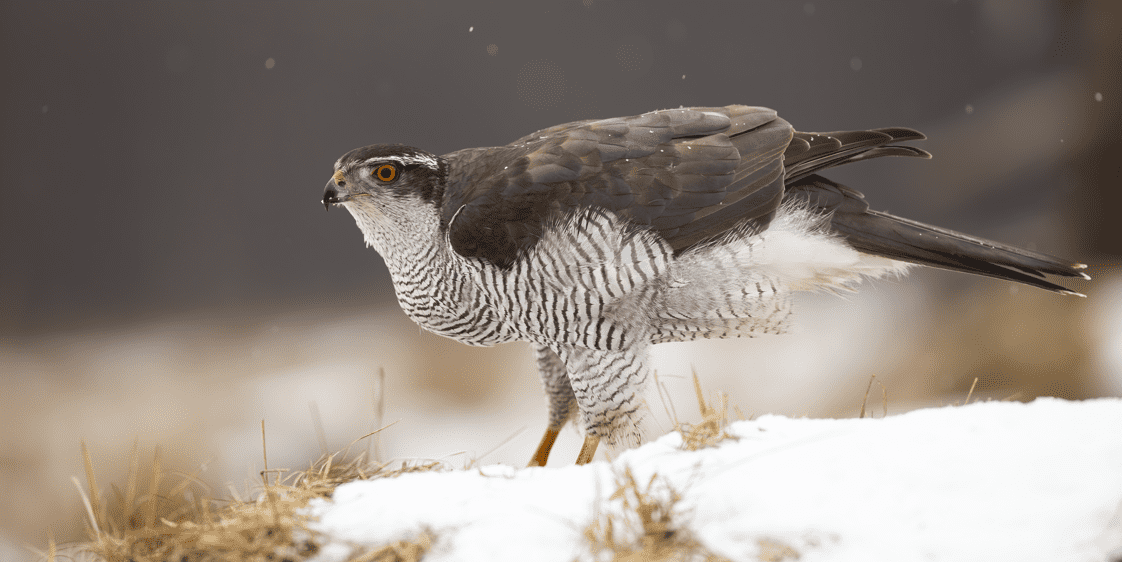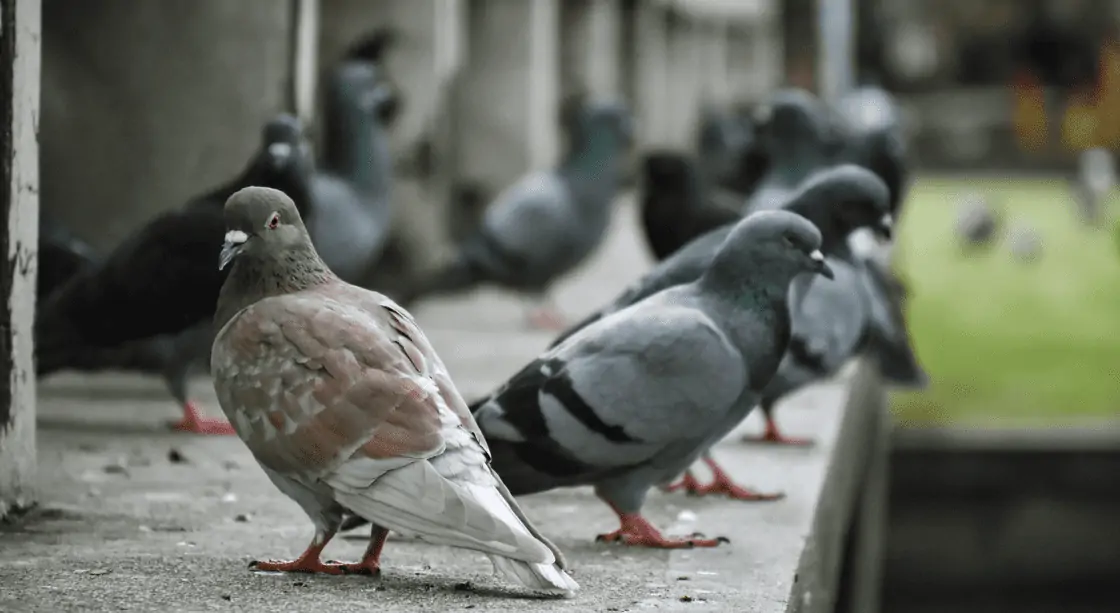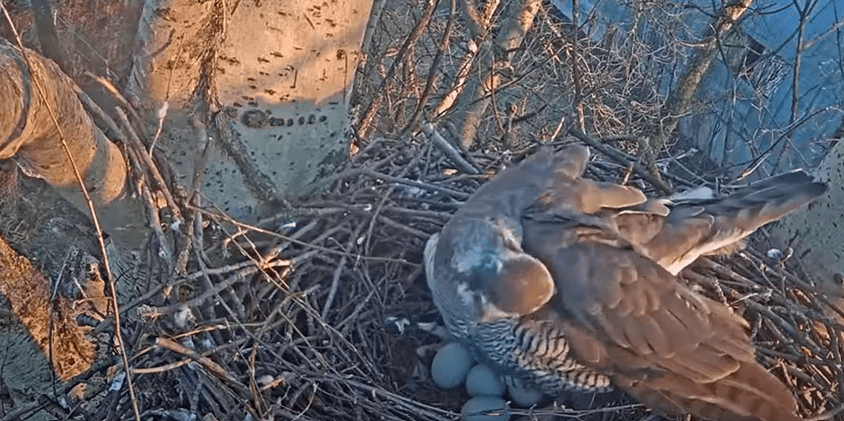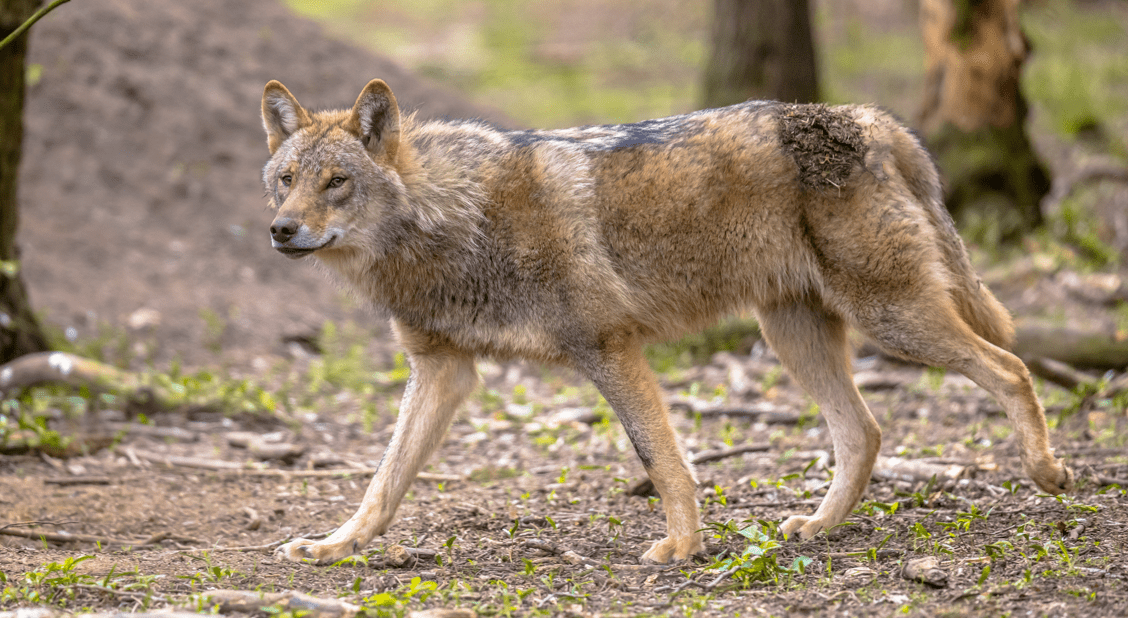- Short-Tailed Hawk Guide - October 13, 2022
- Northern Goshawk Guide (Accipiter gentilis) - September 13, 2022
- Aplomado Falcon Guide - August 31, 2022
The Northern Goshawk (Accipiter gentilis) is a species of raptor in the genus Accipiter. Accipiters are a group of birds of prey that include about 51 species found all around the world. Members of this genus are generally slim birds with short, rounded wings and a long tail that acts as a rudder to help them steer through foliage and around obstacles. They have large feet with strong, long toes tipped with sharp talons that these birds use to hold and kill their prey. Like most birds of prey, birds in this genus have a sharp, hooked beak which they use to feed.
Accipiters often hunt by ambushing their prey, which are generally birds and small mammals that they captured after a short, explosive flight. The typical flapping pattern of Accipiters is a series of flaps followed by a short glide.
Like so many raptor species, female and male Accipiters (including the Northern Goshawk) are not the same size. The male bird is about one-third smaller than the female.
The Northern Goshawk has nine generally recognized subspecies, though taxonomists are still working on finalizing the subspecies taxonomy.
- A. g. gentilis is found across most of Europe, western Russia, and northern Africa. This is one of the larger subspecies and has a markedly large difference between the size of males and females.
- A. g. arrigonii is found specifically on the islands of Sardinia and Corsica in the Mediterranean Sea. This is a smaller subspecies with a blacker head, strongly black-brown back, and a white belly.
- A. g. buteodies is found in northern stretch of Eurasia from eastern Scandinavia to western Siberia. This is a large subspecies and is very pale in color.
- A. g. albidus is found in northeastern Siberia and Kamchatka in Russia. This subspecies is the largest and palest of all the subspecies of Northern Goshawk (even paler than A. g. buteodies).
- A. g. schvedowi is found from the Ural Mountains to west-central China. One of the two smallest subspecies (A. g. fugiyamae being the second). Coloration is typical of the species, with somewhat more brown in the barring on the breast and belly.
- A. g. fugiyamae is found in Japan, specifically on the islands of Hokkaido and Honshu. This is one of the smallest subspecies (along with A. g. schvedowi). It is likely the darkest subspecies in color, with dark slate-colored back and dense dark barring on the breast and belly.
- A. g. atricapillus is found across most of North America. Similar in size to the mid-range European subspecies, though sexual dimorphism (the differences between the sexes) are much less pronounced than in most European subspecies.
- A. g. laingi is found on the Queen Charlotte Islands and Vancouver Island. This subspecies is somewhat smaller than other North American subspecies, and it is also darker in color than A. g. atricapillus.
- A. g. apache is found in southern Arizona, New Mexico, and Mexico. This subspecies has the longest wings (as compared to body size) of any subspecies of Northern Goshawk. In coloration, it is the darkest North American subspecies.
Taxonomy at a Glance
- Domaine: Eukaryota
- Kingdom: Animalia
- Phylum: Chordata
- Class: Aves
- Order: Accipitriformes
- Family: Accipitridae
- Genus: Accipiter
- Species: Accipiter gentilis
How to Identify a Northern Goshawk
Northern Goshawks are heavy-bodied, mid-sized forest hawks. It is one of the largest members of the genus. They have relatively short, rounded wings that allow them to accelerate quickly. They also have a long, straight tail with a deeply rounded tip that allows them to turn quickly through dense vegetation. The head is large and fairly blocky.
Adult birds are blackish-blue on the head and face with a white line over the eye. The nape of the neck, back, and the upper surface of the wings are blue-grey. Adult birds have white undersides with horizontal, fine gray to black barring running across the breast and upper belly. Juvenile birds are brown on their backs, the top of their heads, and the upper surface of their wings. Like the adult, juvenile birds have a white line over the eye. Juvenile bird undersides are predominantly white. Dark brown streaks run vertically down the breast. This streaking is generally less dense on young Northern Goshawks as compared to the young of other Accipiters.
When in flight, Northern Goshawks beat their wings in a slow pattern of flap…flap…glide, flap…flap…glide.
Where Do Northern Goshawks Live: Habitat
Northern Goshawks are found across North America, Europe, and northern Asia. The northern limit of their range is the latitude where the treeline ends, and the tundra begins. From there, it extends south to Mexico, the northern edge of Africa, and Central Asia, respectively. In terms of habitat, Northern Goshawks are birds of the forest. Conifer and deciduous, these birds seem happy to claim territories in either one as long as those trees are tall and old with dense canopy cover and little undergrowth.
This species is a partial migrant. This means that some individuals or populations do not migrate at all, while other individuals or populations do migrate seasonally. Generally, it is the more northern populations that are more migratory and the more southern populations that are more sedentary. Elevation can range from sea level to about 3,000 meters.
Northern Goshawk Diet and Feeding
Northern Goshawks eat a wide range of species, but the majority of their diet is comprised of birds, as is common for members of the Accipiter genus. Of particular importance are medium to large-sized birds and medium-sized mammals.
Specific groups of animals that are particularly important prey are:
- Corvids
- Pigeons
- Grouse
- Pheasants
- Thrushes
- Woodpeckers
- Squirrels
- Rabbits and hares
However, as opportunistic hunters, Northern Goshawk have also been found to eat reptiles, amphibians, fish, and insects at least occasionally.
With their relatively short wind and long tail, Northern Goshawks can swiftly and expertly maneuver in flight when pursuing flying prey, sometimes through very narrow gaps in foliage. As is common of many predatory species, Northern Goshawks commonly hunt along the edges of habitats, such as where forests transition to grasslands or along the edges of clearings within forested areas.
Male and female birds differ in size. However, unlike many other species, this does not result in a major difference in the sizes of prey the the two sexes tend to hunt. Some differences do occur with males bringing down the smallest prey items and females bringing down the largest, but the two sexes overlap extensively.
Northern Goshawk Breeding
This species frequently starts breeding behaviors very early. In some areas of Europe, nest-building behaviors have been observed in September or October as soon as the previous summer’s young have left the nest.
More commonly, breeding begins in March or April. Male Northern Goshawks generally settle on breeding territories first and then begin to display to attract a mate. These displays can include extensive screams, high and complex flights with sharp and dramatic twists and turns through the air, and even plunging dives. Females often join in these flights, and the display flights then change into courtship flights.
Northern Goshawk Nesting
Northern Goshawks build nests from sticks. These nests are generally anywhere from 6 to 25 meters above the ground and are usually built on or near the central trunk of a tree. Males do the majority of nest building with the female in close proximity. Once a nest is completed, it may be used for several years. Sometimes a nest is abandoned, and a new nest is constructed, or a previously constructed nest is returned to. If a previously constructed nest is used, both the male and female generally take part in adding to and reinforcing the old nest.
Clutches generally range from 2 to 4 eggs but can uncommonly range from 1 to 6 eggs. Incubation lasts from 28 to 37 days. Females generally do 90% or more of the incubation. The male forages for prey to feed both himself and his mate.
Young birds fledge from the nest around the 35-day mark after hatching. The young birds generally leave the nest but only go as far as nearby branches, where they continue to gain strength by climbing through the nest tree and practicing flapping. This “brancher” stage generally lasts for about ten days, at which point the young birds take their first flight. Young birds tend to stay within the territories of their parents for a month or two while practicing to fly and hunt and starting to make longer exploratory flights farther and farther from the nest.
Northern Goshawk Eggs
Eggs are laid in the nest at a rate of one egg every two to three days. The eggs are quite oval in shape, making them much rounder than the egg of a chicken, but around the same size at about 2.0 to 2.6 inches in length. Their base color is a light blueish or sometimes white. Occasionally, this base color has pale blotching over it.
Northern Goshawk Population
Data collected by a combination of the North American Breeding Bird Survey, various migratory count sites, Christmas Bird Counts, and similar efforts in Europe and Asia indicate that the Northern Goshawk population is large. Northern Goshawks in Europe and Asia seem to nest at higher densities than birds in North America. However, they remain widespread, dispersed, and secretive in nature across all of their range, and this does make exact counts of this species more difficult. Currently, the best total global population estimate of Northern Goshawks is between 1,000,000 to 2,500,000 individuals.
Is The Northern Goshawk Endangered?
No. The Northern Goshawk is a species that covers a very extensive geographic range. This allows the populations of this species to resist most threats to complete extinction, so at a species level, they are of low conservation concern. However, the Northern Goshawk population declined dramatically worldwide in the 1950s and 1960s.
Much of this decline is due to use of pesticides such as DDT and methyl mercury. Northern Goshawks, like a large number of other species of bird, suffered dramatic failures in breeding when pesticides were widely used. Populations in North America began to recover once many of these pesticides were banned. European populations remained low until much more recently, as DDT and other pesticides were still in use in parts of Europe until the 1980s. Once those chemicals were banned in Europe, the European populations of Northern Goshawk began to recover there as well.
The major and ongoing threat to Northern Goshawks at present is the destruction of their forest habitat and climate change pushing this species ever northward.
Northern Goshawk Habits
Northern Goshawks have strong individual food preferences, just as humans do. While some individual humans may prefer Chinese food and others may prefer Italian, some individual Northern Goshawks prefer specific prey species such as rabbits, while others prefer quail.
Since old nests are often reused and added to, nests can get quite large, reaching as much as five feet in diameter and weighing over a ton!
The Northern Goshawk is the second most widely distributed of the true hawks (the Golden Eagle has a larger geographic range).
Northern Goshawk Predators
Adult Northern Goshawks rarely face threats from predation. Occasionally, they may be killed by Great Horned Owls, wolves, or eagles, but this is likely more a result of these top predators competing over a kill rather than one animal attempting to hunt and eat the other. Northern Goshawk eggs and young are more likely to be predated than adult birds. Common predators include martins and Great Horned Owls.
Northern Goshawk Lifespan
Northern Goshawks live to around eleven years of age in the wild. The oldest wild Northern Goshawk lived until it was sixteen years old. The all-time oldest known Northern Goshawk anywhere lived to be twenty-seven years old. This was a captive bird and so lived longer than usual since it did not face the threats of the wild such as starvation, and did receive veterinary care.
FAQs
Question: What does the ‘Gos’ in the Goshawk name mean?
Answer: This comes from the Old English word ‘gos,’ which means goose, and is a reference to the large birds this species is capable of hunting.
Question: How fast can a Northern Goshawk fly?
Answer: Northern Goshawks have been recorded flying at speeds as high as 61 miles per hour.
Question: How many different species of Goshawk are there?
Answer: There are nineteen species of goshawk that are closely related. These species are found on every continent of the world except South America and Antarctica. Additionally, seven other species have goshawk in their name but are not closely related to the other nineteen.
Research Citations
- Ferguson-Lees, J. and D. A. Christie. (2001). Raptors of the World. Houghton Mifflin Company, New York, NY, USA.
- Johnsgard, P. A. (1990). Hawks, eagles, and falcons of North America. Smithsonian Institution Press, Washington D.C., USA.
- Pyle, P. (1957). Identification Guide to North American Birds: a Compendium of Information on Identifying, Ageing, and Sexing “near-Passerines” and Passerines in the Hand. Slate Creek Press, Bolinas, CA, USA.
- Sibley, D. A. (2014). The Sibley Guide to Birds, second edition. Alfred A. Knopf, New York, NY, USA.
Looking for more interesting readings? Check out:







